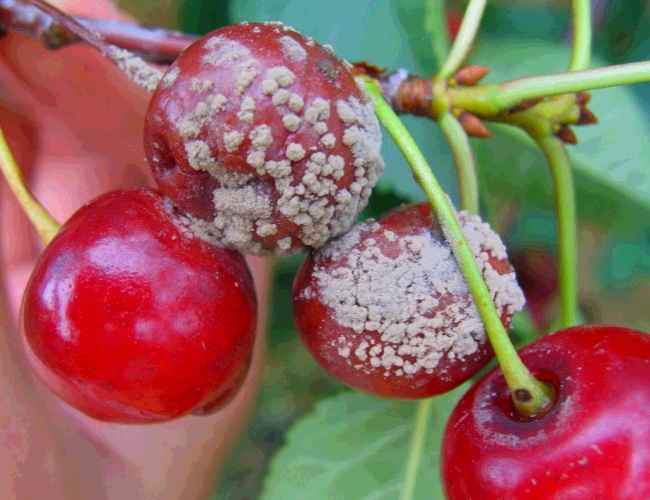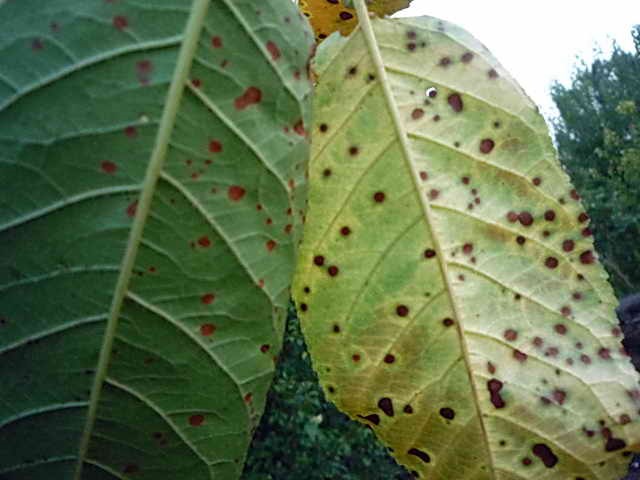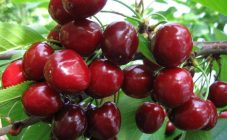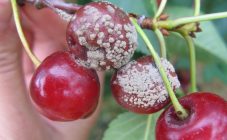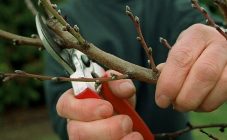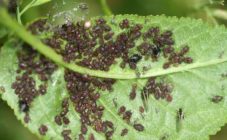Content:
When growing fruit trees, you can encounter various diseases that can harm the tree. Cherries and sweet cherries are no exception, which are often prone to such a common disease as moniliosis.
Monilial cherry burn, or moniliosis, occurs due to exposure to fungal spores. The place where this disease is quite common is the Eurasian continent, where every second cherry or cherry tree is affected. The first sign of the disease is a burnt tree species, in which leaves, flowers and green ovaries dry up.
Description and signs of appearance
Moniliosis is a fungal disease, which is often popularly called "gray rot". Its development occurs on pome and stone fruit plants due to the effect on the tree of spores of a fungus called ascomycete.
Actively developing moniliosis in the absence of proper treatment can lead to the death of the plant. That is why, at the first sign, you need to take measures to process the fruit tree. With moniliosis, the process of pollination is inhibited, and the flowering of cherries is also delayed.
Before starting to fight the disease, you need to correctly diagnose and establish the reason why such symptoms appeared. Among the main symptoms are:
- darkened and completely shriveled branches;
- half-dried leaves on cherry branches;
- unripe mummified fruits;
- soft areas that appear in the wintering places of fungal spores (in most cases, appear on shoots that are more than 3 years old).
- the bark of the cherry bursts.
Large trees have a clear border where you can see the affected and healthy part of the cherry. In places where the fungus takes root, branches and leaves dry out, and some parts of the plant may even turn black.
As mentioned above, a fungus acts as the causative agent of moniliosis, which begins to infect the cherry through the pistils of the flowers that have set. For wintering, mushrooms choose the affected areas of the tree or fallen fruits, which have acquired a different shape during the mummification process. In the process of abundant flowering of sweet cherries, the harmful fungus abundantly sporulates, after which it penetrates the stalk and into the ovary that has formed. Also, the tree can easily become infected through the buds that have set.
In the role of favorable conditions and reasons for the fungus to actively multiply on cherries, there is abundant fog, an increased level of humidity, as well as excessive dew coverage of the tree throughout the entire flowering.
How to deal with cherry moniliosis: preventive measures
In order to avoid such an unpleasant disease when growing cherries, experienced gardeners recommend planting only resistant varieties. When caring for a tree, there are several ways to consider that will help prevent the development of fungal diseases:
- When planting seedlings, a sufficient distance should be maintained between them. Then the air will not stagnate and they will not touch.
- For cultivation, it is necessary to choose elevated areas where groundwater is no more than 1.5 m from the earth's surface.
- The area must be provided with sufficient lighting in order to quickly evaporate excess moisture.
- Pruning, rejuvenating old trees and thinning the crown should be done in a timely manner.
- In order for a plant to resist fungal diseases, it must be fertilized and watered regularly.
- With the onset of spring, those parts of the plant that have turned yellow and dry are pruned. Dried areas of the bark also need to be cleaned off so that the fungus does not settle there and does not grow.
How to treat cherry moniliosis
A measure of the fight against moniliosis can be the use of both chemical and biological drugs. When carrying out garden work, it is imperative to follow the schedule - before the tree begins to bloom, spray it using Bordeaux liquid or the fungicide Skor. In advanced cases, it may be necessary to repeat the procedure after two weeks.
In order for the drug to fully penetrate the leaves, soap can be added to the Bordeaux liquid solution in a ratio of 30 grams per 10 liters. When processing the lower part of the tree, it is necessary to prevent the solution from flowing down the trunk.
Other diseases
Inexperienced gardeners are often interested in - the bark on the cherry has burst, what to do? What disease has affected the tree and what can be done? It should be noted here that when growing cherries, you can encounter several common diseases, namely coccomycosis, clotterosporia and gum disease.
Coccomycosis of sweet cherry
It is a fungal disease that affects leaves and, in rare cases, berries. You can determine the initial stage of the disease by the presence of small red dots on the tree, which over time increase in size and begin to merge with each other. If high humidity is present, then it is possible that a pink bloom will form on the underside of the leaf.
In the absence of proper treatment, complications such as necrosis and browning may occur, and dead tissue particles will crack and fall off, forming open wounds. Many gardeners immediately wonder what to do if the bark of a cherry is cracked?
To prevent coccomycosis, it is recommended to treat the culture using a 4% Bordeaux liquid solution. It is necessary to spray the plant in the fall (after the foliage has fallen off) and in the spring (before the buds bloom).
Clasterosporium disease
As for clasterosporium disease, it is a fungal disease that can affect the entire structure of a tree. Light brown spots are formed on the foliage, bordered by a dark red stripe. The affected areas of the bark may crack, gradually begin to die off and fall off, and the presence of torn holes can be noticed on the leaves. Cracks appear on the trunk of the cherry, from which gum is released. The kidneys turn black and shine over time.
In the process of treating clasterosporia, it is necessary to prune and burn all areas of the tree that were affected. Using a 3% Bordeaux liquid, you need to spray the sweet cherry and its peri-stem circle. It is also recommended to dig up and completely destroy plant debris in the region of the periosteal circle.If the plant is severely affected, the procedure may need to be repeated after 7 days.
Cherry gum flow
Very often, the disease is also called gommosis. It is often caused by mechanical damage to the bark, sunburn, frost cracks or fungal diseases. The first alarming sign of sap flow is the fact that a brown or colorless gum is released from the damaged areas.
If you do not take any action, the culture will weaken, its productivity will decrease and the branches will die off.
What varieties of cherries for the Moscow region are resistant to moniliosis and coccomycosis
As already noted, in order to prevent the appearance of fungal diseases, it is best to plant only those varieties of sweet cherries that are resistant to moniliosis.
The following varieties are perfect for planting in the Moscow region:
- Kirina;
- Cossack;
- Jade;
- The chosen one;
- Zhukovskaya;
- Spectacular;
- Spunk.
Sweet cherry moniliosis is an extremely serious fungal disease. Without proper treatment, it can completely deprive the gardener of the crop, and in neglected situations even lead to the death of an adult tree. Preventive measures should be taken to avoid moniliosis. And you need to fight the disease using biological and chemical preparations, which need to be treated on time.
